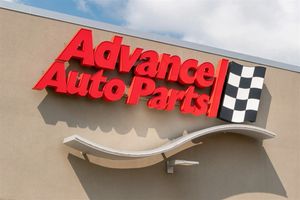
Austin, TX – Despite a challenging second quarter in 2025 marked by a significant revenue miss and ongoing production hurdles, Tesla (NASDAQ: TSLA) is pressing forward with an ambitious vision, betting heavily on its Robotaxi service, the Optimus humanoid robot, and the imminent launch of a lower-cost electric vehicle. The divergence between the company's immediate financial performance and its audacious long-term strategy presents a complex narrative for investors and the broader automotive and technology sectors.
The electric vehicle giant reported a revenue of $22.5 billion for Q2 2025, an 11.8% year-over-year decline, falling short of analyst expectations. This financial setback, coupled with a notable year-to-date stock drop, paints a picture of a company navigating stormy waters. Yet, under the unwavering leadership of CEO Elon Musk, Tesla remains committed to redefining personal transportation and artificial intelligence, signaling that its future lies beyond conventional car manufacturing.
Financial Headwinds Meet Futuristic Ambitions
Tesla's Q2 2025 earnings call revealed a stark reality: the company's core automotive segment revenue plummeted by 16% year-over-year to $16.6 billion, contributing to an overall 12% drop in total revenues. Production remained flat at 410,244 units, but deliveries saw a significant 13% decrease to 384,122 vehicles, marking the steepest year-over-year decline on record for the company. This downturn was attributed to lower average selling prices, reduced regulatory credit revenue, and broader challenges in the U.S. EV market, which itself saw a 6.3% year-over-year sales decline. Tesla's U.S. EV market share, once dominant at 75% in 2022, has reportedly shrunk to approximately 43% in 2025.
In the face of these immediate pressures, Tesla doubled down on its transformative projects. The Robotaxi service, dubbed "Cybercab," officially launched in Austin, Texas, in June 2025, with plans for rapid expansion to cover half of the U.S. population by year-end. The company reported over 7,000 driverless miles logged without incident, emphasizing its Full Self-Driving (FSD) software's safety improvements. Simultaneously, Tesla confirmed the final design of its Optimus humanoid robot, with prototypes of Version 3 expected within months and mass production targeted for early 2026, aiming for an astounding one million units annually within five years. Furthermore, production of a long-awaited lower-cost vehicle commenced in June 2025, with volume production slated for the second half of the year, despite an anticipated slower ramp-up.
Initial market reactions to these dual announcements were mixed. Following the earnings call, Tesla's stock initially dropped by nearly 5% in extended trading, reflecting investor anxiety over the financial miss and production woes. However, some analysts and investors shifted their focus to the long-term potential of the Robotaxi and AI ventures, perceiving these as higher-margin opportunities that could eventually justify Tesla's premium valuation. Director stock sales by figures like James R. Murdoch and SVP Xiaotong Zhu also raised eyebrows, though CEO Elon Musk's reported $1 billion stock purchase in September 2025, his first open-market buy since early 2020, provided a counter-narrative of confidence in the company's future.
The Shifting Sands of Competition: Winners and Losers
Tesla's aggressive pivot towards autonomous services and robotics while grappling with core EV production challenges creates a fascinating dynamic of potential winners and losers across various industries. Traditional automakers, who have been gradually catching up in the EV race, could be short-term beneficiaries of Tesla's production struggles. Companies like General Motors (NYSE: GM), Ford (NYSE: F), and particularly international players like BYD (HKG: 1211), Volkswagen (XTRA: VOW3), and Hyundai (KRX: 005380), are all vying for greater market share in the growing, albeit slowing, EV market. If Tesla's lower-cost vehicle launch falters or is significantly delayed, it could provide a window of opportunity for competitors to capture cost-conscious buyers.
On the flip side, companies deeply invested in autonomous driving technology, AI, and robotics could find themselves in a more complex position. While Tesla's advancements validate the long-term potential of these fields, its sheer scale and ambition in Robotaxi and Optimus could pose a significant competitive threat. Startups and even established tech giants like Waymo (owned by Alphabet, NASDAQ: GOOGL) or Cruise (owned by General Motors, NYSE: GM) in the autonomous ride-hailing space might face intensified competition. Chip manufacturers and AI hardware providers, such as NVIDIA (NASDAQ: NVDA), stand to gain, regardless of the ultimate winner, as the demand for high-performance computing for AI and robotics development continues to surge across the industry. For component suppliers to the EV industry, a slowdown in Tesla's vehicle production could lead to reduced orders, impacting their revenue streams, while an eventual ramp-up of the lower-cost model could bring new opportunities.
Industry Impact and Broader Implications
Tesla's dual strategy of aggressive innovation in AI and robotics while navigating production woes has profound implications for the broader technology and automotive sectors. This event underscores a major industry trend: the convergence of automotive manufacturing with advanced artificial intelligence. Tesla is not merely an EV company; it's increasingly positioning itself as an AI and robotics powerhouse, challenging the traditional definitions of an automaker. This move could force other car manufacturers to accelerate their own AI and autonomous driving initiatives, potentially fostering new partnerships with tech firms or increasing their in-house R&D investments.
The expansion of Robotaxi services, if successful, could revolutionize urban transportation, impacting everything from public transit and ride-sharing services to urban planning and real estate. The projected low cost per mile of Tesla's Cybercab ($0.25-$0.30) could significantly disrupt the economics of personal vehicle ownership and traditional taxi/ride-hail models. Furthermore, the mass production of the Optimus humanoid robot could herald a new era of automation in manufacturing, logistics, and even service industries, with ripple effects on labor markets and societal structures. Regulatory bodies will undoubtedly face increasing pressure to develop comprehensive frameworks for autonomous vehicles and intelligent robots, addressing safety, ethical, and privacy concerns.
Historically, companies have faced similar inflection points where a bold, futuristic vision collides with present financial realities. Amazon (NASDAQ: AMZN), in its early days, prioritized growth and infrastructure over immediate profitability, a strategy that ultimately paid off handsomely. However, failures of ambitious projects in other tech companies serve as cautionary tales. Tesla's current situation is reminiscent of an early-stage tech company with a disruptive vision, operating within the capital-intensive framework of automotive manufacturing, making its trajectory uniquely challenging and impactful.
What Comes Next
In the short term, all eyes will be on Tesla's execution. The ramp-up of the lower-cost vehicle production in H2 2025 will be a critical indicator of its ability to address market demand and production efficiencies. Any further delays or manufacturing bottlenecks could exacerbate investor concerns and erode confidence. Simultaneously, the progress of the Robotaxi service expansion beyond Austin and the debut of Optimus Version 3 prototypes will be closely scrutinized for evidence of tangible advancements and safety records. Regulatory approvals for Robotaxi operations in new cities will also be crucial milestones.
Longer term, Tesla's strategic pivots will necessitate significant adaptations. The company will need to effectively manage the dual demands of scaling vehicle production for both its existing models and the new affordable EV, while simultaneously investing heavily in the complex development and deployment of autonomous systems and humanoid robots. This could involve strategic partnerships, further capital raises, or even divestments if certain ventures prove too capital-intensive or slow to materialize. Market opportunities will emerge in adjacent industries, such as AI infrastructure, sensor technology, and robot component manufacturing. However, challenges include intense competition, potential regulatory hurdles, and the inherent difficulties of bringing cutting-edge, untested technologies to mass market adoption.
Potential scenarios range from a triumphant realization of Musk's "master plan," where Robotaxis and Optimus create entirely new revenue streams that overshadow automotive sales, to a more constrained outcome where ambitious timelines are pushed back and financial pressures force a narrower focus. A mid-ground scenario could see gradual, but sustained, progress in AI and robotics, while the core EV business stabilizes and gradually expands with the new affordable model.
Conclusion
Tesla's Q2 2025 earnings report delivered a sobering reminder of the immediate challenges facing the electric vehicle industry and, specifically, the company itself. The revenue miss, production slowdowns, and stock market volatility highlight the inherent difficulties of scaling manufacturing amidst economic headwinds and intensifying competition. Yet, intertwined with these financial struggles is Tesla's unwavering commitment to a futuristic vision—one where autonomous Robotaxis redefine urban mobility and humanoid robots transform labor.
The coming months will be pivotal. Investors should closely watch Tesla's progress on several key fronts: the production ramp of its lower-cost vehicle, the expansion and safety record of its Robotaxi service, and the development timeline for the Optimus robot. The market's assessment of Tesla moving forward will increasingly hinge on its ability to demonstrate tangible progress in these high-risk, high-reward ventures, rather than solely on quarterly vehicle delivery numbers. The ultimate significance of this period will be determined by whether Tesla can successfully bridge the gap between its present challenges and its extraordinary long-term aspirations, potentially setting a new paradigm for how technology and automotive companies operate in the 21st century.





